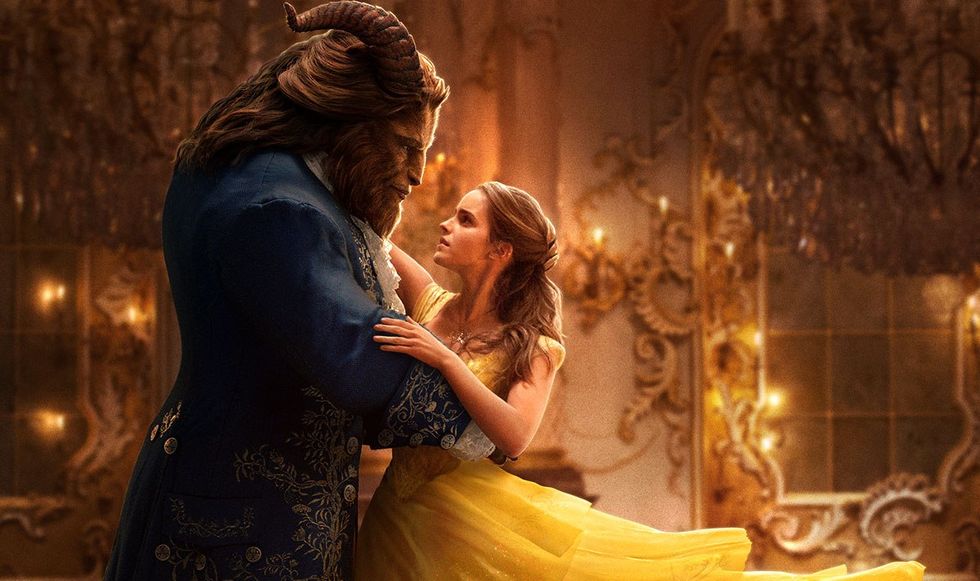When I went with my family to go see the new “Beauty and the Beast” remake, I was probably the most excited person in the theater. I have always associated with Belle on an almost spiritual level, and I couldn’t wait to see if the movie lived up to my (high) expectations. A lot of hype surrounded the movie because it was claiming to be a feminist reimagining of the classic story, so I kept a close watch on how gender operated in the film.
Just as a quick disclaimer: I know that “Beauty and the Beast” is technically children’s movie, and thus it’s impractical for an adult viewer to expect a fully fleshed-out feminist ideology from the film. That being said, Disney was well aware that there would be TONS of adults and twenty-somethings going to see this movie, all of whom are becoming increasingly hip to ideologies of gender equality. There’s nothing stopping Disney from incorporating feminist ideologies in their films where they can, and since Emma Watson is such a prominent advocate for women’s rights, I had pretty high expectations for this film. When I watched “Beauty and the Beast” carefully for its depictions of gender, here’s what I discovered.
The story pushes against the male gender stereotypes in the Disneyverse.
Just as in the original animated film, Luke Evans' Gaston is a dashing jerk. This depiction of him rejects Disney’s standard for the male characters that usually populate their princess movies: The most physically attractive character in the movie is the villain who hopes to suppress Belle’s independence and uniqueness, while the most physically revolting character in the film is the female protagonist's love interest. Since stereotypically the roles of Gaston and the Beast would be reversed, this setup is pleasantly unusual for a fairy tale movie.
As a Disney princess, Belle stands out as a passionately intellectual young woman who values her family and her principles.
I really appreciated the depictions of Belle in this movie. Emma Watson was charming and sweet, just as Belle should be, and her love for learning was easy for me to associate with. The costume designers that worked on this film also scored with me—Belle’s clothing was practical (exempting that famed yellow dress, of course, but DANG that thing was gorgeous) and gave her lots of mobility.
Another great change this film made was to make Belle an inventor in her own right, not just a happy helpmate to her father. She’s also given some genuine emotional depth as she grapples with the loss of her mother, which is more than we can say of the original animated film.
Belle and the Beast have a genuine intellectual bond.
This was definitely the best change this movie made. By making the Beast just as well-read as Belle, the pair could form a strong emotional-intellectual connection that was entirely absent in the original animated movie. This remake also worked a lot harder to prove to us that the Beast was worth loving and staying in an enchanted castle for (if you weren’t head-over-heels in love with Dan Stevens’ Beast after he sang “Evermore”, you’re the heartless beast here). Since Belle and the Beast had grounds for liking each other, Belle becomes a lot less spineless than she seemed in the original.
For all her great qualities, there are still issues with Belle’s characterization.
At worst, Belle can be reduced to a girl who is desperate enough for love to look for it in a literal beast. At best, she’s chock full of qualities that mirror those of female Disney characters that already exist. Though the Beast is smart, the fact remains that Belle is willing to remain with a guy (beast? I don’t know, man) who has imprisoned her. And I think this hits at the heart of this movie’s feminism issues: it’s not this remake that’s the problem. It’s the classic story that’s inherently misogynistic because you can’t have “Beauty and the Beast” without Belle’s unrelenting compassion for the Beast.
Which leads me to the “at best” statement. As much as I hate to say it, there’s very little about this Belle that sets her apart from other recent Disney females. Rapunzel, Moana, Merida, Tiana, Mulan, the list goes on and on: there are plenty of Disney leading ladies who are just as “out-of-the-box” as Emma Watson’s Belle. Problem is, that’s not too “out-of-the-box” anymore.
“Beauty and the Beast” misses out on numerous opportunities to incorporate a dynamic feminist ideology.
In all, “Beauty and the Beast”s feminism was pretty thin and flimsy. As wonderful as the movie was, I still feel a little cheated: with Emma Watson and Dan Stevens, who are very socially conscious, as our leads, I was hoping that Disney would navigate the classic story with more tact. The film ultimately wants me to believe that Belle’s learnedness and devotion to her values qualifies “Beauty and the Beast” as a feminist movie, but it’s a flawed story. However, I very honestly believe that the creators of this film had very good intentions and that they did the best that they could to improve a flawed story. Is the “Beauty and the Beast” reboot an improvement of the animated original? Definitely. Does that make it the ultimate feminist Disney movie? Unfortunately, not quite.
















